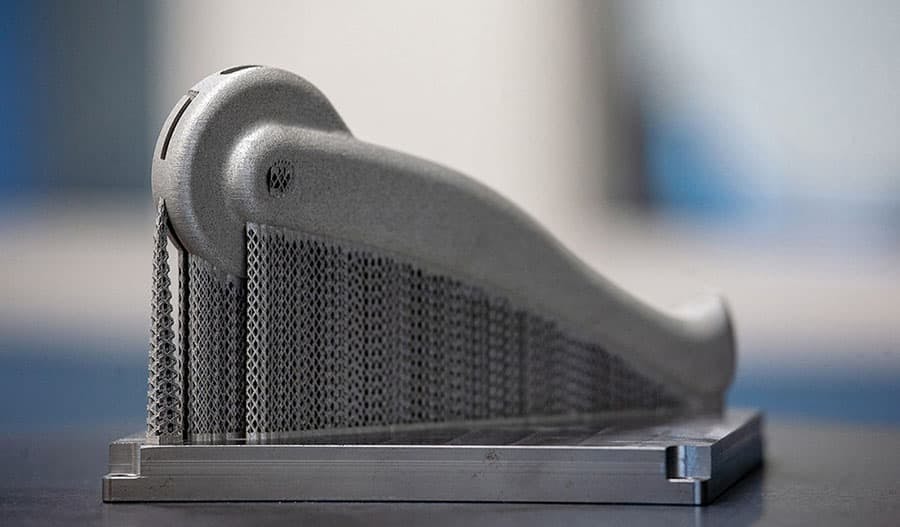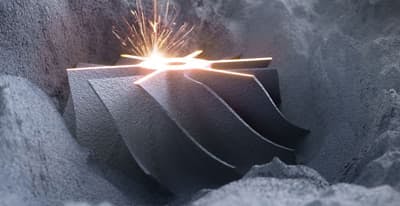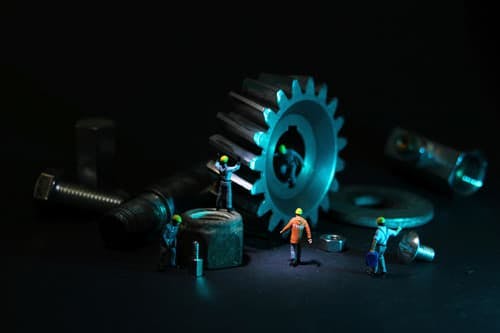Material, Efficiency and Post-processing Challenges for Additive Manufacturing
Design flexibility, material savings, and suitability for low-volume production are just some of the reasons why some companies are adopting additive manufacturing. But there are still a few issues that need to be addressed to fully utilize the technology in production.
1. Inconsistent material standards and properties
In theory, 3D printing is capable of producing highly complex and functional parts, whether mechanical, biological or electronic. But to do this, there must be an adequate selection of materials.
The availability of materials is an important challenge for the 3D printing industry, and the development of 3D printing materials is only just beginning compared to the decades of material development history in traditional manufacturing. In the early years of the industry, the focus of industrial 3D printing development was on prototyping, with little emphasis on material properties per se. But as the technology begins to translate into production solutions, the material development process has accelerated considerably.
High-performance 3D printing polymers and composite materials have developed rapidly in recent years. Some large chemical companies and professional 3D printing manufacturers have developed new materials such as carbon fiber reinforced polymers with comparable strength to metals and flame retardant composite materials. . The development of metal materials will take longer, but the progress is obvious to all.
The types of 3D printing materials have indeed developed rapidly, but a practical problem that has to be faced is the inconsistency and instability of material properties. Basically, every manufacturer will have a material standard. Currently, the industry lacks a reliable, unified material database that can give validated printing parameters and mechanical properties, rather than a different set of data for each company.
Achieving a consistent and repeatable 3D printing process is challenging, which is a big reason why many traditional manufacturers are reluctant to use this technology. Developing a database of 3D printing materials has become a practical problem that the industry has to face. At present, some standard-setting bodies such as ISO and ASTM have issued specifications for metal powders such as nickel, titanium and stainless steel.
Others have established databases of material and process information for additive manufacturing, such as America Makes, in partnership with Stratasys and the National Institute of Aeronautics and Astronautics, released the FDM-based ULTEM™ 9085 Type I material properties database earlier this year, which will have Helps further the use of certified polymer materials in aircraft interiors.
In conclusion, the establishment of material standards will be key to meeting manufacturers' expectations for 3D printing performance and reliability.
2. Slow production
At present, even industrial 3D printers generally lag behind traditional mechanical equipment in terms of speed and efficiency, which is very disadvantageous for industries such as automobiles and consumer goods that need to be driven by large-scale mass production. In these industries, products need to be manufactured and delivered in the shortest possible time in order to maintain productivity.
Ford's head of additive manufacturing technology mentioned that the scale of production in the automotive industry is very different from aerospace and medical. The former must study how parts can be produced in minutes or even seconds, take any necessary measures to improve Production speed is critical for the automotive industry.
In fact, most 3D printer manufacturers currently targeting production applications are looking for ways to increase the speed of 3D printing. Some companies have developed modular systems to increase throughput, while others are committed to continuous innovation of existing technologies. Here, we give two examples to illustrate.
The SLS technology field usually adopts the method of increasing the number of lasers to increase the production speed, but the Laser ProFusion technology launched by EOS in Germany has systematically developed the entire light source module. Through the transformation, the new equipment is equipped with up to 1 million diode lasers, which can realize multi-point simultaneous sintering, which can greatly speed up the printing time. An ongoing challenge with traditional injection molding technology is that mold making takes up a significant portion of the cost and is only economically viable when production scales to a few thousand units or more, said EOS Senior Vice President of Polymer Systems and Materials Business. However, LaserProFusion technology can manufacture simple and complex parts without mold opening, and the production efficiency is very high. The annual output of each machine exceeds 100,000 pieces, and the cost of each part is also very considerable.
There have also been some notable developments in traditional metal SLM technology. The Multi-Layer Parallel Printing (MCP™) technology launched by Aurora labs in Australia can achieve the effect of spreading powder at one time, printing multiple layers at the same position, and simultaneously printing with different layer thicknesses at the same time and at different positions.
The introduction of this technology breaks the improvement limit of traditional SLM technology that only increases the speed by increasing the number of lasers, and can achieve a great leap in the speed of metal printing. At Formnext 2018, the company can already print 30 layers simultaneously, and recently released data shows that the company's PMP1 3D printer can print at speeds of up to 350 kg/day, an increase of 2,000 compared to the speed reported last year.
Increasing the speed of production is no easy task and requires a lot of technological innovation. As of 2019, the technology of EOS and Aurora Labs is still in the development stage, but at least it gives us a glimpse of the future of the technology.
3. Low post-processing efficiency
Parts made with 3D printing almost invariably require some type of post-processing to improve mechanical properties, precision, and surface quality. This is not a huge problem when using 3D printing to make prototypes, but as the technology transitions to end-of-line manufacturing processes, post-processing at scale and automation has become one of the key bottlenecks in setting up an additive manufacturing line.
For metal 3D printing technology, numerous post-processing steps are required to ensure quality, such as powder removal, stress relief annealing, wire cutting, support removal, CNC and other finishing, and hot isostatic pressing, to name a few. Some of these steps still require manual operations, and for critical tasks, skilled operators are required.
Prototypes or even dozens of parts may still be cost-effective by hand, but when hundreds or even thousands of parts are produced, the need for post-processing automation for 3D printing becomes extremely urgent.
Automated solutions can increase productivity through consistent post-printing capabilities, but there are currently only a few focus-specific solutions that help automate post-processing, such as DyeMansion's automated cleaning systems, AMT's surface smoothing solutions, and PostProcess Technologies' Support removal and surface preparation systems. However, it is undeniable that these systems are primarily designed for polymer 3D printed parts.
Material, speed and post-processing challenges for additive manufacturing productionDyeMansion Automatic Cleaning System
In terms of metal 3D printing, post-processing techniques for traditional manufacturing are still used. To automate these technologies further, some companies are also starting to implement robotic solutions that can help with material replacement and part handling. Both EOS and Digital Metal introduced the concept of fully automatic production last year, which uses robots to perform most of the operations, such as mounting the printing substrate, cleaning powder, and post-processing, etc. The goal is to replace all manual work to promote continuous and mass production.
While this development is encouraging, the pace of innovation in the field has been slow. In the future, the number of advanced post-processing solutions will surely increase to accommodate the growth of the additive manufacturing industry.
4. Epilogue
This paper reveals the achievements and existing problems of the current additive manufacturing industry from the aspects of production speed, materials and post-processing, which is basically the status quo of the industry as a whole. The existence of these factors limits the development speed of additive manufacturing technology, but from a series of newly born technologies and standards, these challenges are slowly being overcome, and challenges are opportunities.





